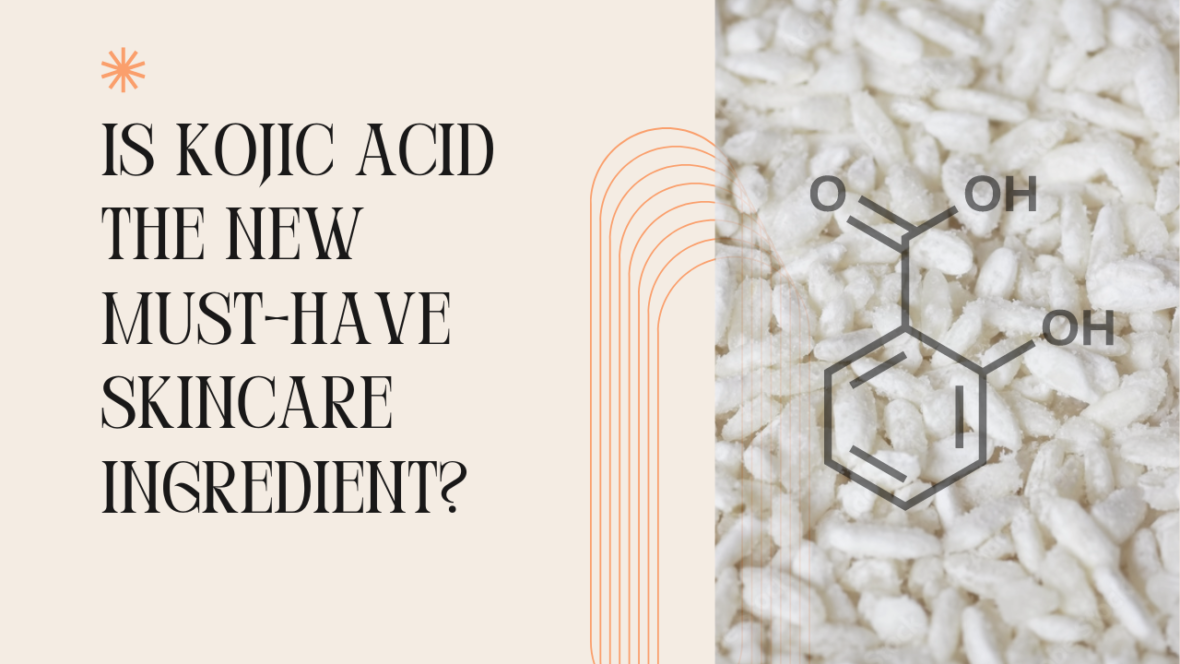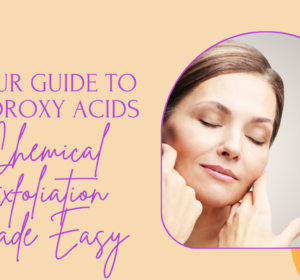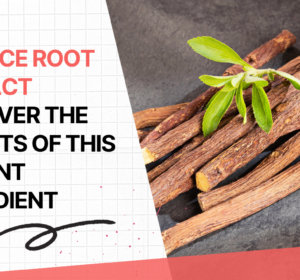Kojic acid, a naturally occurring ingredient derived from fungi, has become a popular choice in skincare for its brightening and anti-ageing properties. But what exactly is this ingredient, and how can it benefit your skin? This comprehensive post explores the science behind kojic acid, explores its various benefits for different skin concerns, and discusses potential side effects and safe usage practices.

Kojic Acid: From Fungal Origins to Skincare Hero
Kojic acid is a byproduct of the fermentation process of several fungal species, most commonly Aspergillus oryzae, used in sake production in Japan. It was first discovered in the 1920s and later identified as a potent inhibitor of melanin production. Melanin, the pigment responsible for skin colour, can become unevenly distributed, leading to hyperpigmentation issues like dark spots, sun damage, and age spots.
The Science Behind Kojic Acid’s Brightening Power
From a chemical point of view, kojic acid is a relatively simple molecule with the formula C6H6O4. It belongs to the class of compounds called pyranones. These molecules have a five-membered ring structure with one oxygen atom (O) incorporated into the ring. This compound presents three important functional groups:
Hydroxyl group (OH): This group is attached to the second carbon atom in the ring, giving it the ability to form hydrogen bonds and interact with other molecules.
Methyl group (CH3): This group is attached to the same carbon atom as the hydroxyl group, adding a slight bulkiness to the molecule.
Carbonyl group (C=O): This group is located at the fourth carbon atom in the ring and contributes to the overall reactivity of the molecule.
This ingredient exhibits mild acidic properties due to the presence of the hydroxyl group. This acidity plays a role in its ability to lighten skin tone. It can form complexes with metal ions, particularly iron (Fe). This chelation ability might contribute to its potential benefits for inhibiting melanin production, which is responsible for skin pigmentation.
Kojic acid works its magic by targeting tyrosinase, a key enzyme involved in melanin synthesis. By inhibiting tyrosinase activity, this product effectively reduces melanin production, leading to a gradual lightening of existing hyperpigmentation and a more even skin tone. This process makes this acid a valuable ingredient in addressing various skin concerns.
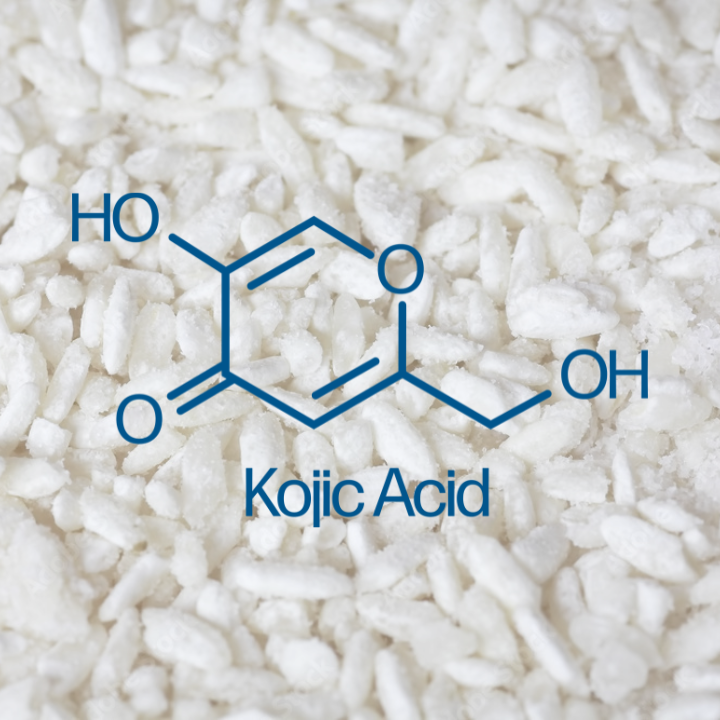
Exploring the Benefits of Kojic Acid for Radiant Skin
Kojic acid offers a range of benefits for those seeking to achieve a brighter, more even-toned complexion. Here’s a closer look at its key contributions:
Fading Hyperpigmentation: As discussed earlier, the primary benefit of this ingredient lies in its ability to fade dark spots, age spots, and other hyperpigmentation concerns. It can be particularly effective for sun damage, acne scars, and melasma (dark patches on the face caused by hormonal changes).
Skin Brightening: By reducing melanin production, kojic acid promotes a brighter, more luminous complexion. This benefit is particularly sought after by those with dull or uneven skin tones.
Antioxidant Properties: This acid possesses some antioxidant properties, helping to combat free radical damage caused by environmental stressors like UV rays and pollution. Free radicals contribute to premature ageing and skin concerns like wrinkles and fine lines.
Antibacterial and Antifungal Effects: Studies suggest that kojic acid may possess antibacterial and antifungal properties. While more research is needed, these properties could potentially aid in managing acne-prone skin and preventing fungal skin infections.
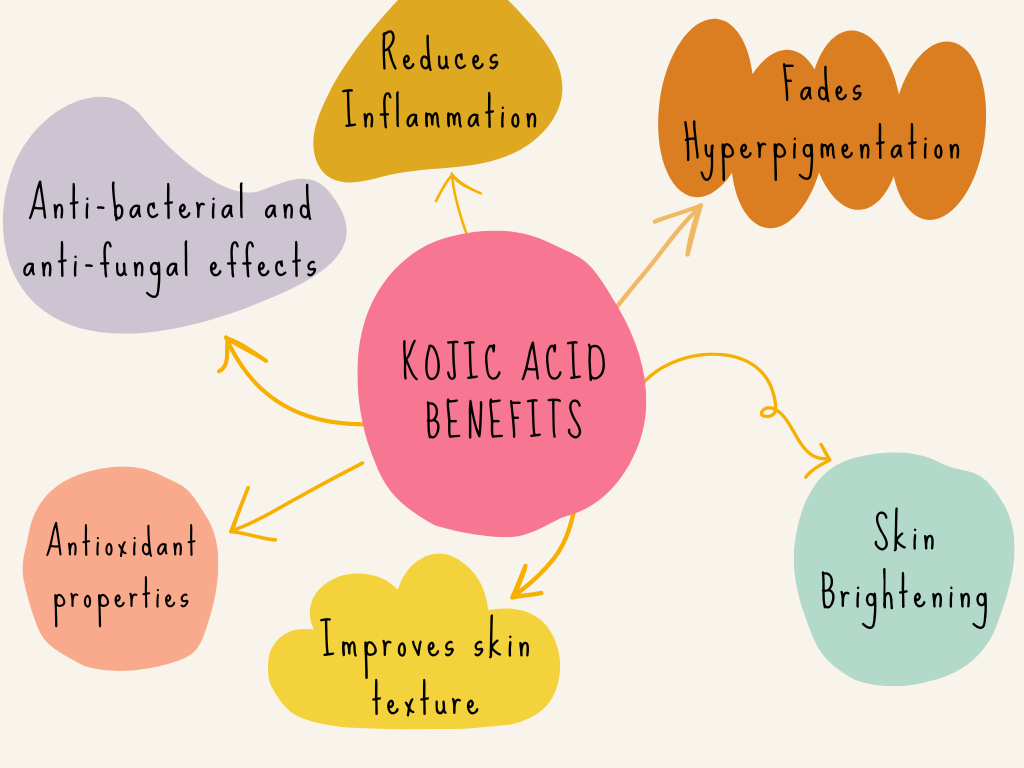
Addressing Specific Skin Concerns with Kojic Acid
Kojic acid can be a valuable addition to your skincare routine for various concerns. Here’s a breakdown of its potential benefits for specific issues:
Sun Damage and Age Spots: Its ability to lighten hyperpigmentation makes it a helpful ingredient for reducing the appearance of sun damage and age spots. However, sun protection remains crucial to prevent further damage.
Acne Scars: Hyperpigmentation can occur after acne breakouts. This acid can help lighten these dark spots, promoting a more even-toned appearance.
Melasma: Melasma, a common hyperpigmentation concern during pregnancy or due to hormonal imbalances, can be addressed with kojic acid. However, it’s crucial to consult a dermatologist before using kojic acid while pregnant or breastfeeding.
Beyond Brightening: Additional Benefits of Kojic Acid
While skin brightening is the primary focus, kojic acid may offer additional benefits:
Improved Skin Texture: Some users report experiencing a smoother and more refined skin texture with regular kojic acid use. This could be due to its mild exfoliating properties.
Reduced Inflammation: This acid may possess some anti-inflammatory properties, potentially helping with calming irritated or inflamed skin.
Important Considerations Before Using Kojic Acid
While kojic acid boasts numerous benefits, it’s essential to be aware of potential drawbacks and safe usage practices:
Potential for Irritation: It can irritate sensitive skin, causing dryness, redness, or itching. Patch testing on a small area of your arm before applying it to your face is crucial.
Sun Sensitivity: This ingredient can make your skin more sensitive to sunlight. Consistent use of broad-spectrum sunscreen with SPF 30 or higher is mandatory while using kojic acid products.
Uneven Results: The effectiveness of kojic acid can vary depending on skin type and the severity of hyperpigmentation. Patience is key, as results may take several weeks to become noticeable.
Potential for Allergic Reactions: Although rare, allergic reactions to this ingredient can occur. Discontinue use immediately if you experience any discomfort.
Limited Research on Long-Term Effects: While this acid appears safe for most when used appropriately, long-term effects require further research.
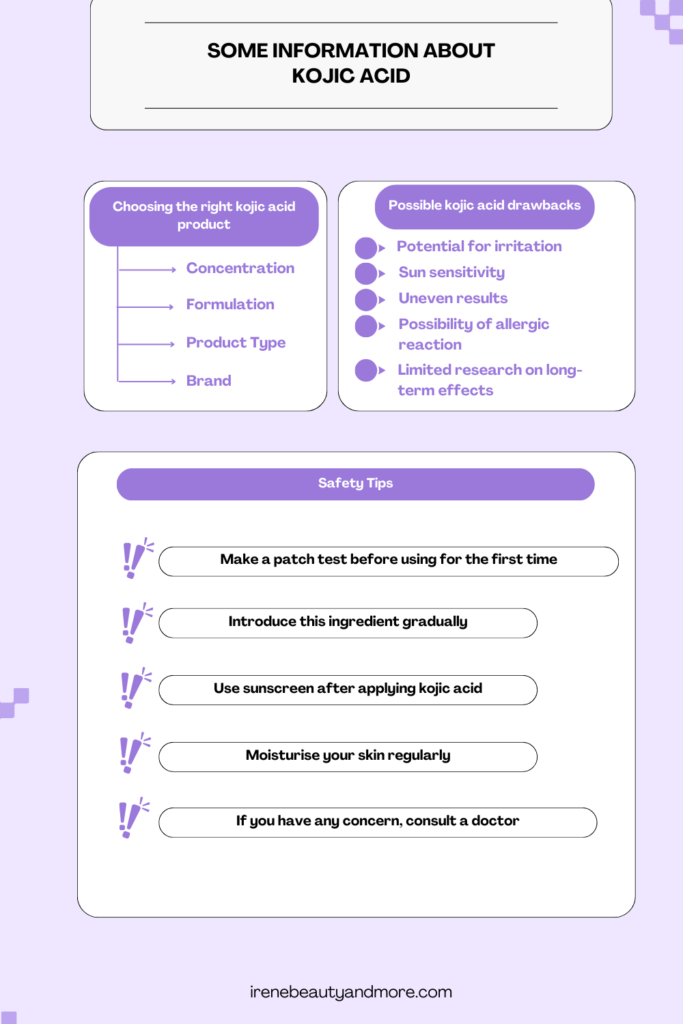
Choosing the Right Kojic Acid Product and Safe Usage Tips
There are different options of products containing kojic acid. What do you need to consider before choosing the right product?
Concentration: The concentration of this ingredient in skincare products typically ranges from 1% to 4%. Lower concentrations are gentler for beginners or sensitive skin, while higher concentrations may be more effective for stubborn hyperpigmentation. Start with a lower concentration and gradually increase if tolerated.
Formulation: this acid is often combined with other beneficial ingredients like antioxidants, moisturizers, or soothing agents to minimize irritation. Choose a product formulated for your specific skin type and concerns.
Product Type: Kojic acid comes in various forms, including serums, creams, lotions, and soaps. Serums generally have the highest concentration and target specific areas. Creams and lotions offer a more hydrating effect, while soaps are typically for brief cleansing contact.
Reputable Brands: Opt for products from reputable brands that adhere to safety standards and quality control measures.
Safe Usage Tips for Kojic Acid:
Patch Test: Before applying any kojic acid product to your face, perform a patch test on a small area of your inner arm. Wait 24-48 hours to monitor for any irritation.
Gradual Introduction: Start by using this acid once a day, preferably at night. Gradually increase frequency to twice daily if tolerated.
Sun Protection is paramount. As kojic acid increases sun sensitivity, consistent use of broad-spectrum sunscreen with SPF 30 or higher is crucial every day, even on cloudy days.
Moisturize Regularly: Kojic acid can be drying, so incorporate a gentle, fragrance-free moisturizer into your routine to maintain skin hydration.
Consult a Dermatologist: If you have any underlying skin conditions, allergies, or concerns, consult your dermatologist before using kojic acid products. They can advise on the suitability and recommend appropriate formulations.
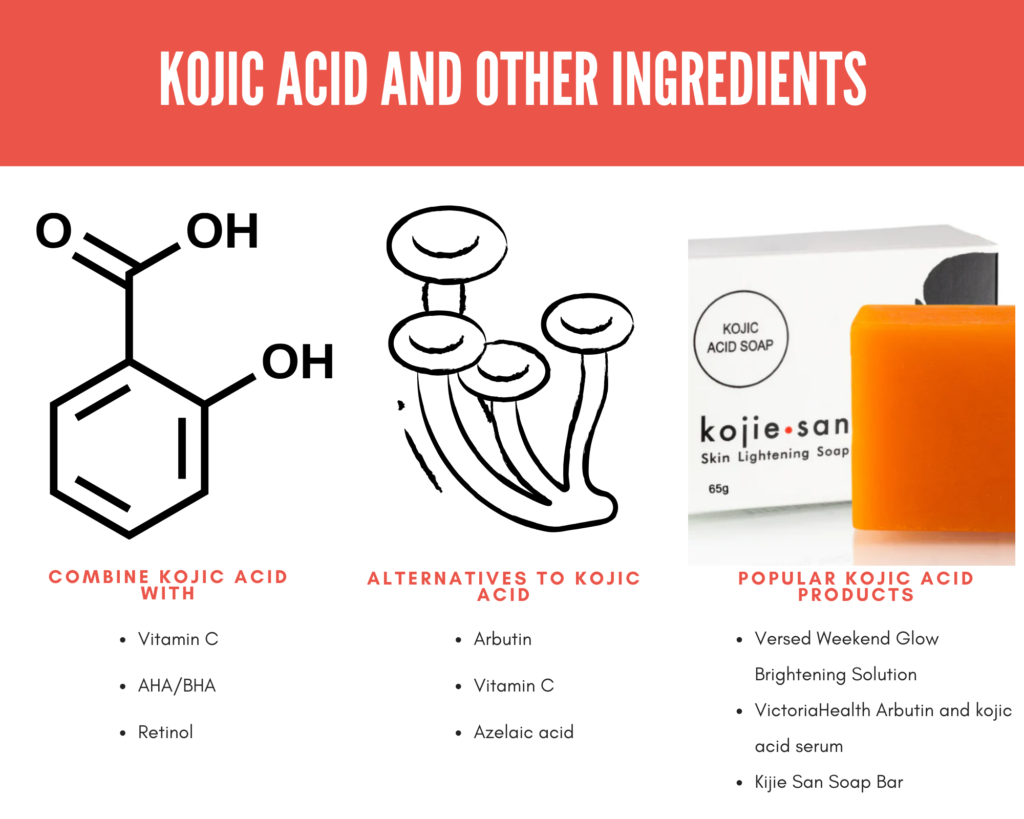
Combining This Acid with Other Skincare Ingredients
Kojic acid can be a valuable addition to your skincare routine, but it’s essential to understand how it interacts with other ingredients:
Vitamin C: Vitamin C is another potent brightening agent that works synergistically with kojic acid to enhance its effectiveness. However, both ingredients can be destabilized by sunlight. Apply vitamin C in the morning followed by sunscreen and use kojic acid at night.
Alpha Hydroxy Acids (AHAs) and Beta Hydroxy Acids (BHAs): AHAs (glycolic acid, lactic acid) and BHAs (salicylic acid) can work well with this ingredient for a more comprehensive approach to hyperpigmentation and uneven skin texture. However, using them together can increase the potential for irritation. Introduce these ingredients one at a time and monitor your skin’s response.
Retinol: Retinol is a powerful anti-ageing ingredient that can also improve hyperpigmentation. Combining kojic acid with retinol can be very effective, but due to their individual potential for irritation, it’s best to consult a dermatologist for guidance on safe usage and application schedule.
Alternatives to Kojic Acid for Skin Brightening
While kojic acid offers numerous benefits, some individuals may prefer alternative ingredients for brightening and addressing hyperpigmentation. Here are some options:
Hydroquinone: A prescription medication considered the gold standard for treating hyperpigmentation, hydroquinone is highly effective but can cause irritation and requires strict sun protection.
Arbutin: A naturally occurring alternative to hydroquinone, arbutin works by inhibiting tyrosinase activity and is generally well-tolerated, making it suitable for sensitive skin.
Vitamin C Serums: As mentioned earlier, vitamin C serums are potent antioxidants that can help brighten skin and reduce hyperpigmentation with consistent use.
Azelaic Acid: This naturally occurring acid has anti-inflammatory and brightening properties, making it beneficial for acne-prone skin and mild hyperpigmentation.
My Favourite Kojic Acid Products
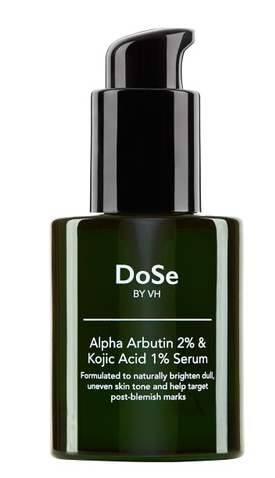
DOSE BY VH – Alpha Arbutin 2% + Kojic Acid 1%
This serum contains 2% Alpha Arbutin, to help target uneven skin tone, dark spots, age spots and post blemish marks, together with 1% Kojic Acid, a powerful antioxidant and skin brightener.

Versed – Weekend Glow Brightening Solution
A fusion of lactic, glycolic, azelaic and kojic acids to gently refine and retexturize, this sloughs away dulling dead cells and accelerates turnover, helping to fade the appearance of dark spots and scarring.
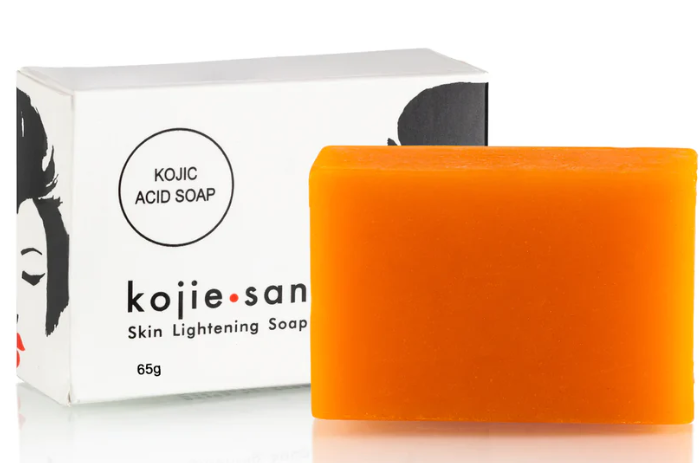
Kojie San – Soap
This Kojie San bar of soap is an ideal choice for all your everyday needs. Its advanced whitening ingredients are known to help lighten the skin and reduce dark spots. This soap bar is enriched with Kojic acid and provides a refreshing and fragrant experience with every use.
Kojic acid, with its brightening and anti-ageing properties, can be a valuable addition to your skincare routine. By understanding its benefits, potential drawbacks, and safe usage practices, you can harness the power of this acid to achieve a more even-toned, radiant complexion. Remember, consistency and sun protection are key to maximizing results and minimizing potential side effects. If you have any concerns, consult your dermatologist for personalized advice on incorporating this ingredient into your skincare regimen.
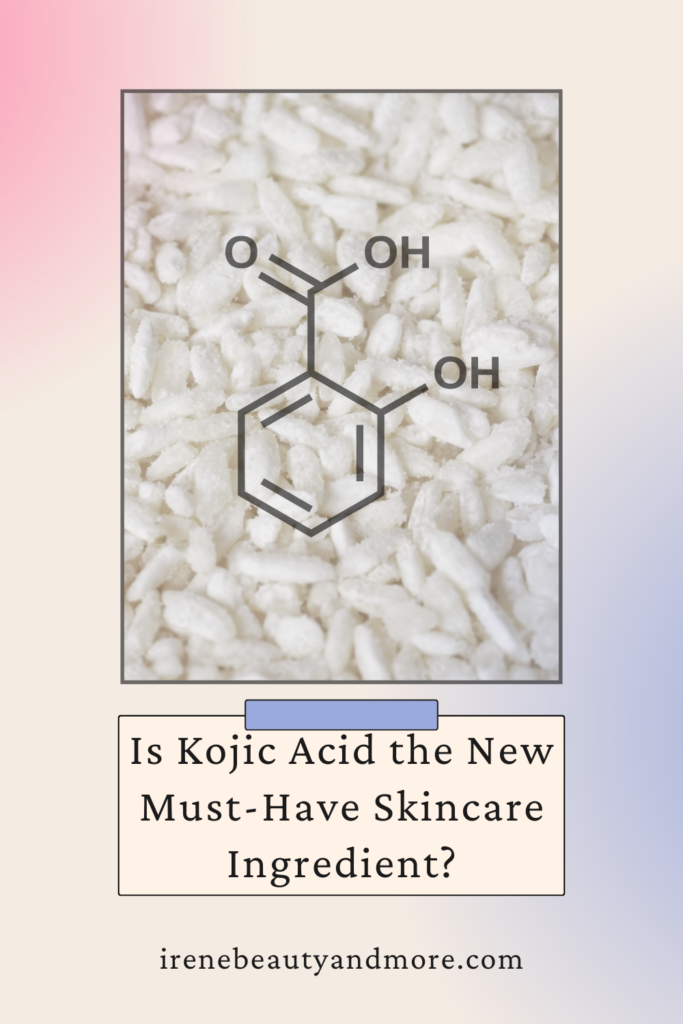
Bear in mind that some of the links in this post are affiliate links and if you go through them to make a purchase I will earn a commission. Keep in mind that I link these companies and their products because of their quality and not because of the commission I receive from your purchases. The decision is yours, and whether or not you decide to buy something is completely up to you.
